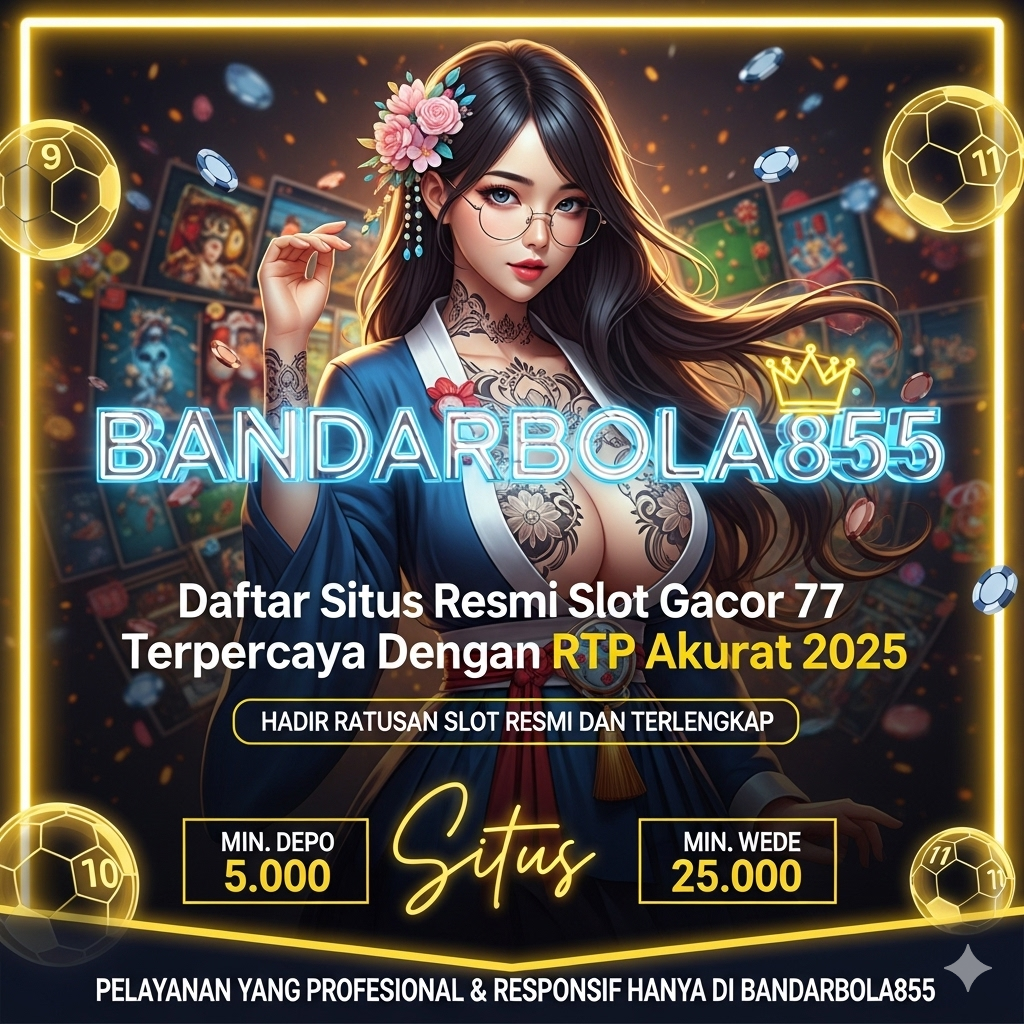BANDARBOLA855 ⁂ Situs Online Bandar Slot Gacor Terpercaya Dengan Link RTP Hari Ini
BANDARBOLA855 hadir sebagai bandar slot gacor yang dikelola secara profesional untuk menghadirkan pengalaman bermain yang stabil dan nyaman. Melalui sistem bandar slot online yang transparan, platform ini menyajikan situs slot gacor dengan performa ringan, navigasi mudah, serta pembaruan RTP slot gacor hari ini yang bisa dipantau dengan jelas. Pendekatan ini membuat BANDARBOLA855 relevan bagi pemain yang mencari situs slot online terpercaya tanpa klaim berlebihan, sehingga setiap sesi bermain terasa lebih terarah dan menyenangkan.
Sebagai situs slot gacor, BANDARBOLA855 mengutamakan kualitas sistem dibanding klaim berlebihan. Seluruh permainan dijalankan di server optimal sehingga pengalaman bermain slot online terasa lebih konsisten dan nyaman.
⭐ Keunggulan BANDARBOLA855 Sebagai Bandar Slot Gacor
- 1. Bandar Slot Gacor Dengan Sistem Profesional
- 2. Bandar Slot Online Transparan
- 3. RTP Slot Gacor Update Setiap Hari
- 4. Situs Slot Online Ringan & Responsif
- 5. Situs Slot Gacor Dengan Keamanan Terjaga
BANDARBOLA855 dikenal sebagai bandar slot gacor yang mengelola permainan secara resmi dan terstruktur. Sistem ini membuat performa game lebih stabil serta minim gangguan teknis.
Sebagai bandar slot online, BANDARBOLA855 menyediakan data permainan yang bisa dipantau dengan mudah. Pemain tidak perlu menebak karena semua informasi disajikan secara terbuka.
Informasi RTP slot gacor diperbarui secara rutin. Fitur ini membantu pemain memilih permainan dengan peluang terbaik tanpa harus mencoba satu per satu.
Struktur situs slot online dibuat ringan dan cepat diakses di berbagai perangkat. Navigasi jelas sehingga cocok untuk pemain lama maupun pemula.
Sebagai situs slot gacor terpercaya, BANDARBOLA855 menggunakan sistem keamanan berlapis untuk menjaga data akun dan aktivitas pemain.
🎯 Alasan Memilih BANDARBOLA855
Banyak pemain memilih bandar slot online bukan hanya karena tampilan, tetapi karena stabilitas. BANDARBOLA855 memadukan sistem bandar slot gacor, performa situs slot gacor, dan pembaruan RTP slot gacor secara konsisten.
Pendekatan ini membuat BANDARBOLA855 relevan sebagai situs slot online yang fokus pada kenyamanan, bukan sekadar janji. Semua fitur dirancang agar pemain bisa bermain dengan ritme santai tanpa tekanan.
911.410 Member Sudah Berhasil Maxwin
Price:Rp 5,000 ( LIMA RIBU)
BANDARBOLA855 ⁂ Situs Online Bandar Slot Gacor Terpercaya Dengan Link RTP Hari Ini

BANDARBOLA855 merupakan situs slot online yang dikelola langsung oleh bandar slot online profesional dengan sistem permainan stabil dan transparan. Platform ini dirancang untuk pemain yang mencari bandar slot gacor dengan akses informasi RTP slot gacor yang jelas dan mudah dipahami setiap hari.
Star Seller
Star Sellers have an outstanding track record for providing a great customer experience – they consistently earned 5-star reviews, dispatched orders on time, and replied quickly to any messages they received.
Star Seller. This seller consistently earned 5-star reviews, dispatched on time, and replied quickly to any messages they received.
📌 DETAIL WEBSITE BANDARBOLA855
| Nama Situs | BANDARBOLA855 |
| Kategori | Bandar Slot Gacor Resmi & Terpercaya |
| Status Situs | RESMI & AKTIF |
| Jenis Permainan | Slot Online, Slot Gacor, Game Provider Resmi |
| Minimal Deposit | Rp5.000 |
| Metode Deposit | Transfer Bank, E-Wallet, QRIS |
| Keunggulan | Link Stabil, Server Cepat, RTP Tinggi, Anti Blokir, Jaminan Resmi |
| Akses | 24 Jam Nonstop |
| Keamanan | Sistem Enkripsi & Proteksi Data Aktif |




